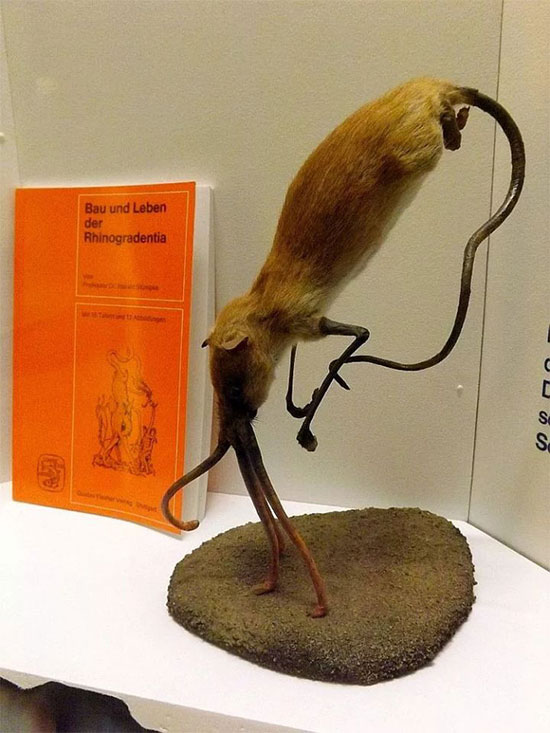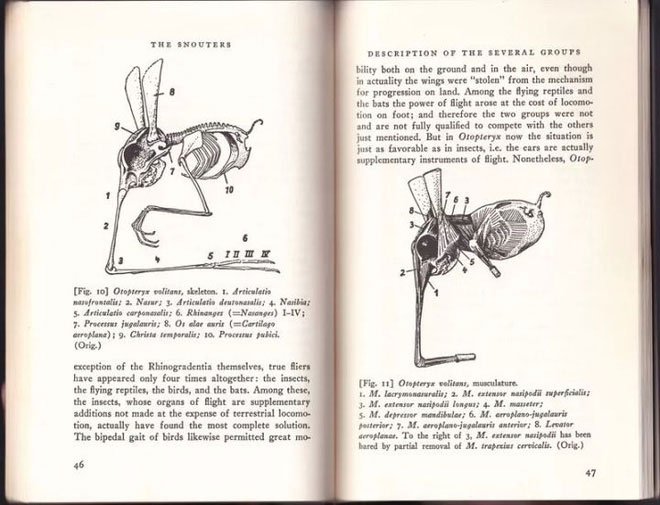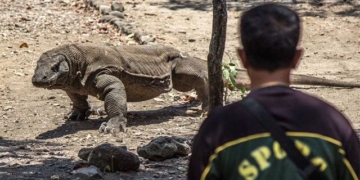You might think it’s absurd to imagine, but in reality, these creatures can be even stranger than you can imagine.
On our planet, there once existed a type of creature that, instead of moving on four legs, used its nose to support its body and move around, despite having legs.
Moreover, their noses were extremely flexible and could be used for fighting, hunting, and even courting during mating season. However, this mysterious species only existed on one island in the Pacific, which, sadly, was submerged after a nuclear test by the United States.
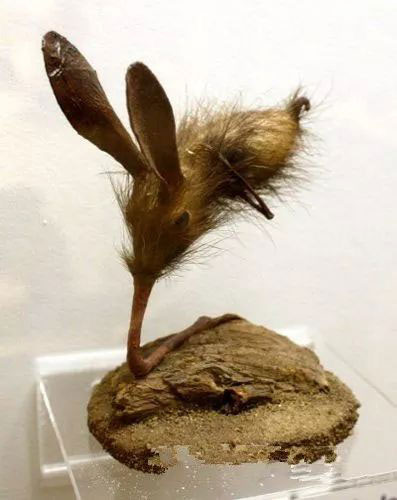
This creature uses its nose to support its body and move around, even though it has legs.
Of course, the mystery of this animal has undoubtedly sparked tireless research efforts by scientists around the world. Unfortunately, today, records of them have nearly vanished, leaving behind only a single book documenting the behaviors of all species of nose-walking animals, accompanied by hand-drawn illustrations of each species. The author of this book, Harald Staple, is believed to be the first to discover these mysterious creatures.
Staple was a Swedish explorer. In 1941, during the brutal years of World War II, he was captured by Japanese forces in a concentration camp.
Fortunately, Staple found an opportunity to escape, and as a result, he was shipwrecked while fleeing and washed ashore on the paradise of nose-walking animals – Hiddudify, part of the Hi-iay Archipelago in the South Pacific.
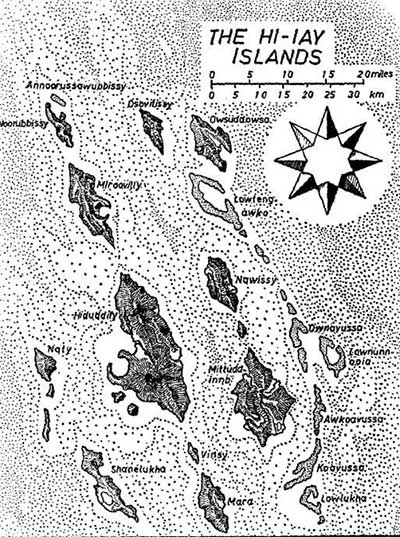
Location of the Hi-iay Archipelago.
Upon setting foot on the island, he was astonished to witness the bizarre behaviors of the creatures there; he could hardly believe that such animals existed on Earth that could use their noses to move.
Additionally, he discovered a unique endemic plant species, as well as primitive insects like cockroaches, six-winged dragonflies, and others.
This vividly colorful archipelago brought Staple one surprise after another.
After returning home, Staple shared his incredible experiences on the island with those around him, creating a sensation in the scientific community at the time.
As a result, scientists from all over the world flocked to the Hi-iay Archipelago to study the animals there directly and conduct a series of research.
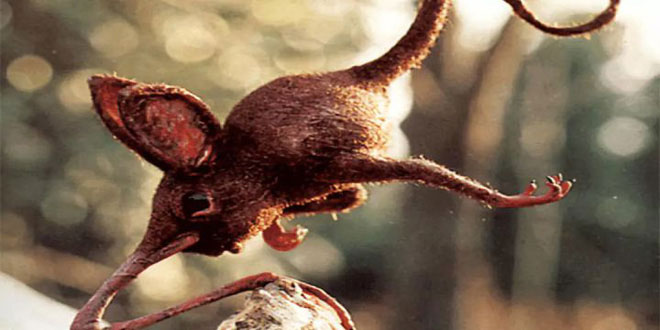
This is an extremely agile and lively mammal.
Upon approaching the island, scientists discovered that the nose-walking animals there were incredibly agile mammals, with a gestation period typically lasting from 7 to 12 months. Their reproductive capabilities were not as strong or frequent as those of other species around the world. However, due to living in an archipelago with few natural enemies, their survival rate was very high.
For the Nosewalkers, the nose surpassed the concept of a mere morphological organ; for them, it was akin to a functional organ.
In other species, the nose serves only as a respiratory and olfactory organ, while the Nosewalkers’ noses have replaced limbs and are utilized for various purposes. Therefore, zoologists have specifically named them “Nosewalkers” to distinguish them from the conventional concept of a nose.
The nasal cavity of the Nosewalker occupies a significant portion of its body length. Beyond maintaining respiratory functions through the nostrils, it also undertakes more challenging tasks such as movement, digging, and hunting.
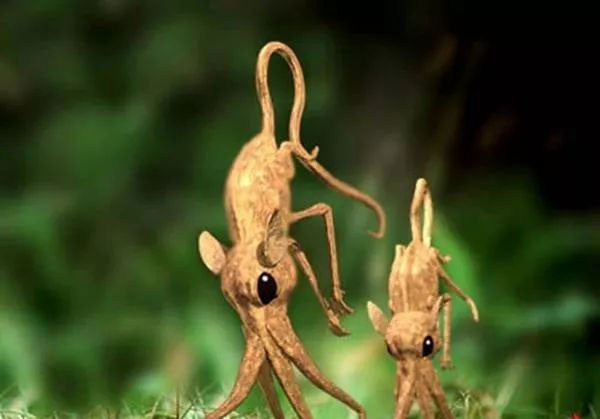
The nasal cavity of the Nosewalker occupies a significant portion of its body length.
To facilitate free movement, the nasal cavity of these creatures is equipped with strong bones and joints, allowing their noses to develop similarly to the legs of other animals.
The nasal organs of the Nosewalker are so powerful that they can perform almost any task, resulting in significant degeneration of most of their body structures.
Their limbs have lost their mobility, with the front legs of the Nosewalker becoming auxiliary parts that support gripping movements, while their hind limbs have largely shrunk or disappeared entirely. Even their digestive systems have degenerated into a simple tube.
The absence of blood vessels, anuses, and spines in some of these species has sparked controversy. Some have questioned whether Nosewalkers should be considered vertebrates, as their structure resembles that of worms more than other mammals.
Additionally, the reduction of other organs has further promoted the development of the nasal organs of the Nosewalkers, making them increasingly robust.
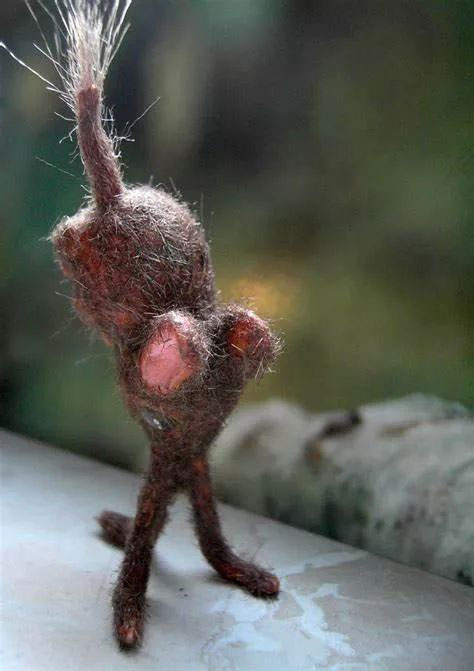
Their limbs have lost their mobility.
Upon arriving at this archipelago, scientists were even more surprised to discover a rich population of up to 14 families and 189 species. On the 18 islands of this archipelago, many other animals with peculiar noses were also discovered.
Their ancestors were likely insectivorous animals, and under the unique geographical conditions, these nose-walking animals developed a very distinct feature: their noses are incredibly unique, with some species having just one nose, while others have four or more.
Their noses come in various shapes, some resembling columns, others like trumpets, and some like snails. Their noses serve many purposes, not only for crawling, jumping, but also for catching worms; they have numerous important functions, but primarily, they are used for body movement and support.
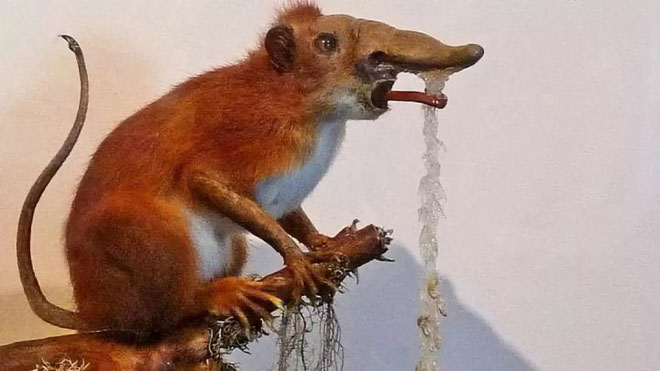
Their noses have many strange shapes.
The largest Nosewalker discovered is called the Snouter, measuring over 1.7 meters in length. They have four powerful noses, all used for movement.
Additionally, they possess a long and flexible tail with a venomous secretion. They often raise their tails, and when prey approaches, they lunge straight at the unfortunate animals and begin to release venom.
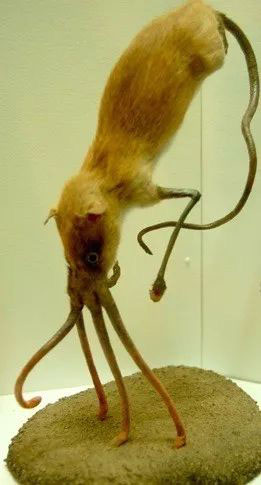
The largest Nosewalker found measures 1.7m.
Another species called Otoplex is the only flying Nosewalker of this kind. They have two very large ears that function almost like “wings.”
They erect their large ears vertically and then use the joints in their noses to jump upwards. When they reach the peak of their jump, they naturally spread their ears and flap them at a rate of 10 beats per second to maintain a short period of airborne status.
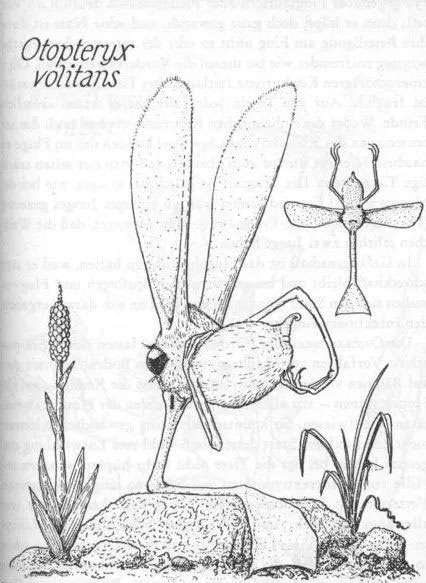
The Otoplex has two very large ears that function almost like “wings.”
Unfortunately, just 16 years after Harald Staple discovered these mysterious animals, they went extinct.
In 1957, the United States secretly conducted nuclear weapon tests approximately 120 kilometers near the archipelago in the South Pacific. The atomic bomb directly caused the entire Hi-iay Archipelago to sink into the sea.
The Nosewalkers, living within an area of over 1,000 square meters in the Hi-iay Archipelago, also became extinct as a result.
That same year, Staple published a book documenting everything he knew about the 189 species of Nosewalkers. Strangely, after the extinction of the Nosewalkers, other research materials aside from this book also inexplicably vanished.
